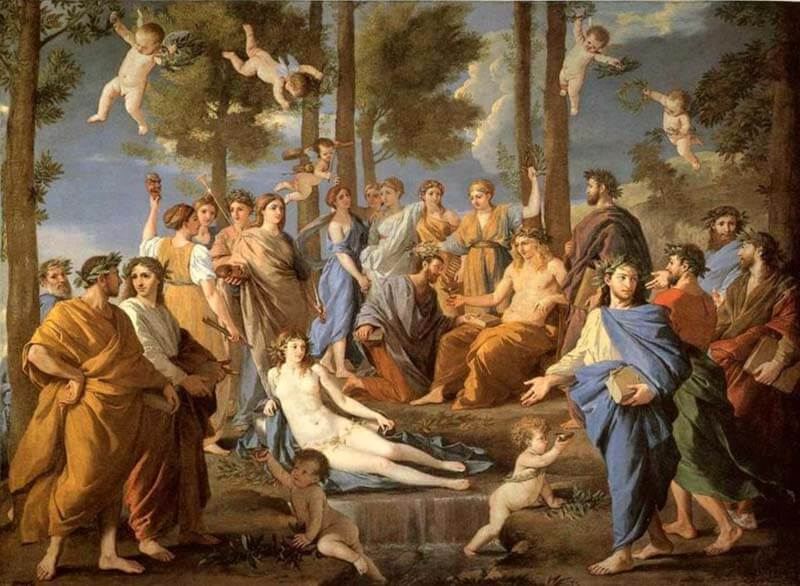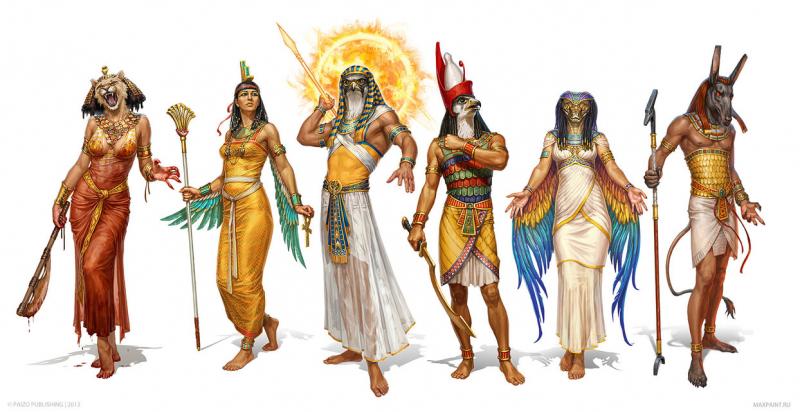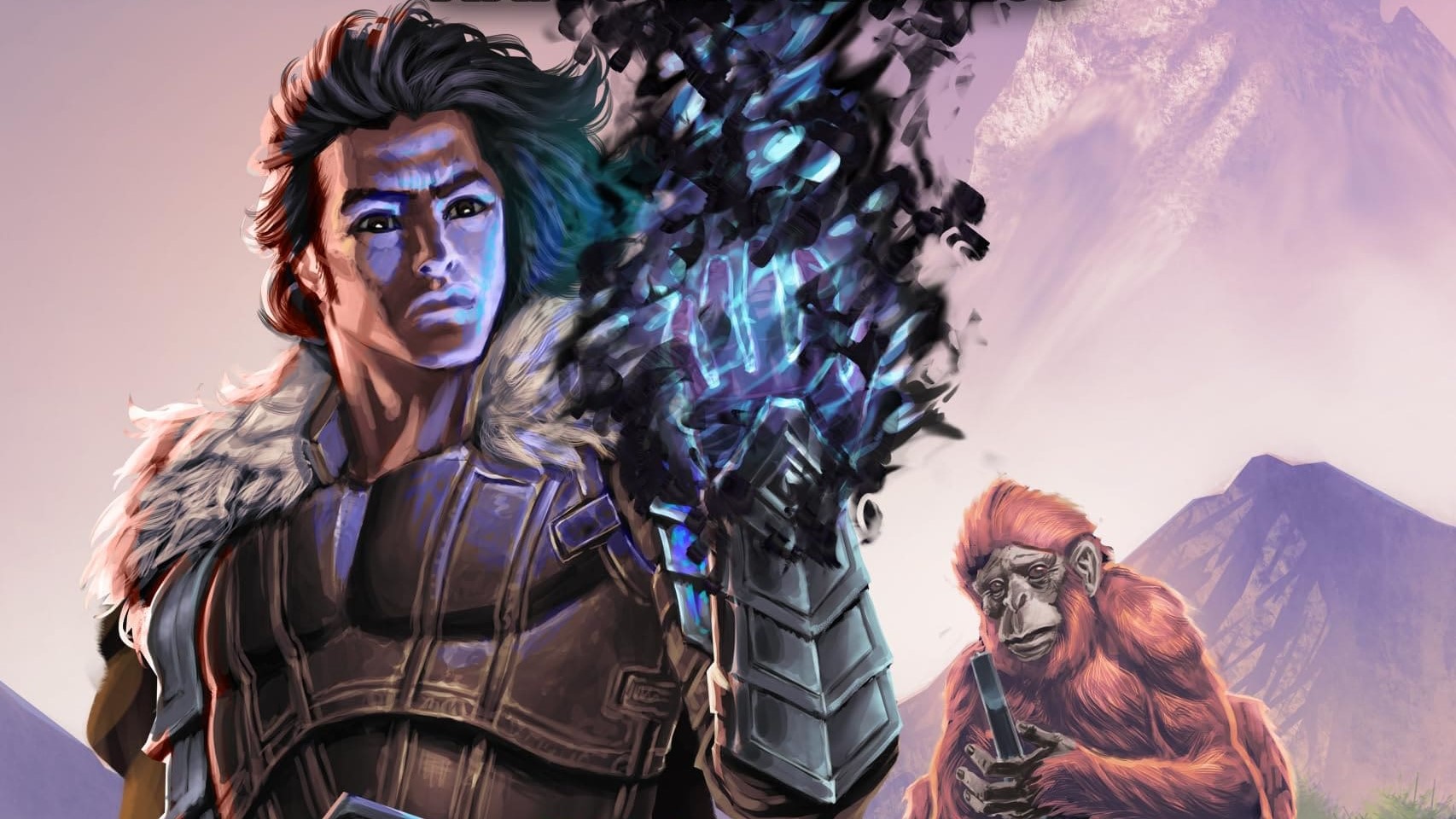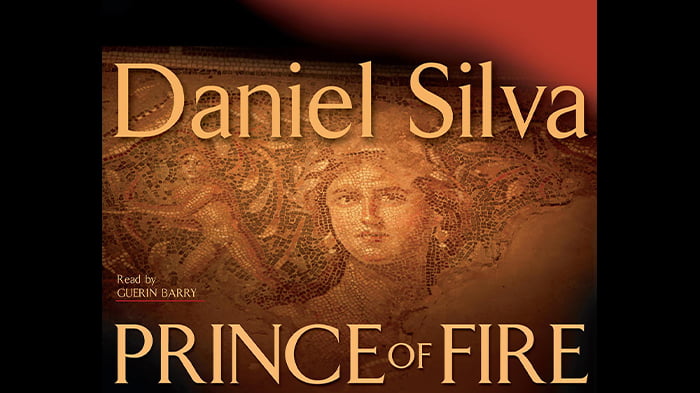1: Holy Bible – Tokybook
Certainly, readers are no stranger to the legend of Adam and Eve, the legend of the “fallen angel” Lucifer becoming the devil Satan, or the story of Lord Jesus being crucified on the cross. All these classic stories above are part of the Christian Bible, often referred to as Catholicism.
The Christian Bible shares common origins with the Jewish Torah and the Muslim Quran, all stemming from Abraham. In the Old Testament, the origin of the world in the Christian Bible, as well as in Judaism and Islam, is the creation by God. However, the distinct feature of the Christian Bible is its focus on the New Testament, detailing the incarnation of Jesus, his teachings, gathering of disciples, crucifixion on the cross, and resurrection.
Over more than 2000 years of evolution, the Christian Bible has crossed the borders of Judea – the homeland of Jesus, to become the main religion in Western countries, especially Italy, England, France, the US, Brazil… To this day, not only Catholics but many people believe in the Christian Bible, having faith in the true existence of God. Numerous stories in the Christian Bible have become classics of human civilization, such as Adam and Eve eating the forbidden fruit, being expelled from the Garden of Eden, the “fallen angel” Lucifer rebelling against God, getting defeated by other angels led by Michael, and being cast down to hell to become Satan; Lord Jesus being crucified on the cross…
With such widespread popularity, the Christian Bible is undeniably the top name in the Top 10 most famous myths in the world, even if it’s not a myth of any particular nation.
2:Greek mythology
Among national mythologies, the most renowned is Greek mythology. Dominating the religion of the largest civilization 3000 years ago, Greek mythology has had a profound influence on Western civilization.
Greek mythology is a collection of myths and legends of ancient Greece related to gods, heroes, the nature of the world, and the origins as well as the meanings of their religious beliefs and rituals. They were part of the ancient Greek religion and are now part of a modern religion circulated in Greece and around the world called Hellenismos. Modern scholars refer to and study these myths to shed light on the religious and political institutions of ancient Greece, its civilization, and to understand the very formation of myths. Greek mythology is considered more logical than other mythologies because it clearly and rationally explains how the world was created and how its mythical stories relate to many real events.
Greek mythology begins with the formation of the universe from chaos (Chaos), giving birth to primordial gods, the giant Titans, one-eyed Cyclops; followed by wars between the old gods and young gods until Zeus (often referred to as Father Zeus) – leading the younger gods, emerges victorious and rules over the gods on Mount Olympus. Many characters in Greek mythology have become famous, such as Zeus, Poseidon (god of the sea), Hades (god of the underworld), Athena (goddess of war), Hercules, Achilles, Medusa (the snake-haired gorgon)… In addition, many stories and symbols in Greek mythology are also immensely famous, like “Achilles’ heel”, “The 12 Labors of Hercules”, “The Trojan War”, “the Golden Fleece”, “the fire of Prometheus”, “Pandora’s box”, “Theseus’ feat of slaying Medusa”, and so on.

3:Norse mythology
In Europe, another mythology that is as renowned as Greek mythology is Norse mythology. While Greek mythology originates from the South, Norse mythology comes from the North, representing a shared lore of countries like Norway, Finland, Sweden, Denmark, Iceland, Germany, and more. Unlike the Bible, which is written in books, or Greek mythology that is passed down by wandering bards and collected by Athenian scholars, Norse mythology was primarily preserved through oral tales. Yet, the Nordic people held a deep belief in their deities.
Prominent among these are gods like Odin (the god of war), Thor (the god of thunder), Njord (god of wind, sea, and fire), Frey (god of weather and fertility), Hod (god of winter and darkness), and Loki (god of mischief and deceit). Most notable among these are Odin and Thor. The gods in Norse mythology reside in the palace of Asgard. Unlike Greek mythology, Norse mythology has a concept of heaven, similar to the Bible. The heaven in Norse mythology is Vanaheim.
Norse mythology flourished during the Viking Age when Viking warriors from the North invaded lands like England, Scotland, and Germany. During this period, those who followed Catholicism labeled Norse mythology as heresy. There ensued a religious conflict alongside territorial wars.
4:Chinese mythology
In the East, Chinese mythology is considered the most widespread. Originating from the era of the Three Sovereigns and Five Emperors in ancient China, Chinese mythology became the primary belief throughout the Chinese realm, fortified by Daoist philosophies from Laozi, and persisted through various eras.
In Chinese mythology, deities and immortals reside in the heavens. The supreme ruler and overseer of the universe is the Jade Emperor. Following him are a series of deities of various ranks, notable ones include Queen Mother of the West, the Grand Pure One, Vega, the Supreme Treasure Celestial Worthy, the God of the South Pole Star, the God of the North Pole Star, and deities of Fortune, Prosperity, and Longevity.
Initially, Chinese mythology comprised tales about the formation of the universe, things, and phenomena such as Nuwa mending the sky, Pangu creating the heavens and the earth, and the Weaver Girl filling the seas. Later, this pantheon of deities interconnected, transitioning from Nuwa representing the matriarchy to the Jade Emperor symbolizing the patriarchy. Many deities were named after stars and the Five Elements like Vega, the God of the South Pole Star, and the God of the North Pole Star. Some new gods were introduced from legends like Erlang Shen, Nezha, and Monkey King. Other immortals were based on folk stories like the Weaver Girl and the Cowherd, and the mythology also includes various spirits like the Nine-Tailed Fox and White Bone Spirit.
Overall, Chinese mythology is intricate, blending folk tales, Daoism, and literary works like “Investiture of the Gods,” “Strange Stories from a Chinese Studio,” and “Journey to the West.” Despite its complexities, Chinese mythology has always been deeply revered, even in modern times. Its influence has radiated to neighboring countries like Japan, Korea, North Korea, and Vietnam. Today, in Vietnam, many customs still involve worshipping various deities from Chinese mythology, such as the Jade Emperor, the God of the South Pole Star, the God of the Kitchen, the Earth God, and the trio of Gods symbolizing Fortune, Prosperity, and Longevity.
5:Egyptian mythology
Egyptian mythology is a collection of myths from ancient Egypt, depicting the actions of the Egyptian gods as a means to understand the world around them. These beliefs expressed by these legends are an integral part of ancient Egyptian religion. Mythology frequently appears in Egyptian literature and art, especially in short stories and in religious documents like hymns, ritual texts, funerary texts, and temple decoration. These sources rarely contain a complete tale and typically depict short excerpts.
Inspired by natural cycles, the Egyptians viewed the present as a succession of periodic patterns, while the most distant times were linear. Myths were set in these earliest periods, and they established models for the patterns of the present. Present events repeat events from myths, and by doing so, they renew maat, the fundamental order of the universe. Among the most significant episodes from the mythological past are the creation myths, in which gods form the universe out of primordial chaos; tales of the reign of the sun god Ra upon the earth; and the Osiris myth, concerning the struggles of the gods Osiris, Isis, and Horus against the disruptive god Set. Events from the present that might be regarded as myths include the sun god Ra’s daily journey across the sky and its otherworldly counterpart, the Duat. Recurring themes in these mythological stories include the conflict between those who maintain maat and the forces of disorder, the importance of the pharaoh in maintaining maat, and the continual death and resurrection of deities.

The details of these sacred events differ widely from one text to another and often seem contradictory. Egyptian myths are primarily metaphoric, translating the essence and behavior of deities into terms humans can understand. Each variant of a myth represents a different symbolic perspective, enriching the Egyptians’ understanding of the gods and the world.
Mythology profoundly influenced Egyptian culture. It inspired or influenced many religious rituals and provided the ideological foundation for kingship. Scenes and symbols from mythology appeared in art in tombs, temples, and amulets. In literature, myths or elements of them were used in stories from humor to allegories, demonstrating that the Egyptians adapted mythology to serve a variety of purposes. Egyptian mythology is also ranked among the top 10 most famous mythologies in the world.
6:Indian Mythology
Hindu mythology is the collection of stories found in Hindu texts such as Vedic literature, epics like the Mahabharata and Ramayana, Puranas, regional literature like the Periya Puranam. Hindu myths are also discovered in widely translated popular texts like the Panchatantra and Hitopadesha, as well as in Southeast Asian texts. The structure of Hindu mythology is not consistently monolithic. The same myth often appears in different versions and can be represented differently across religious-social traditions. These legends have been recorded to have been modified by different philosophical schools over time, particularly within the Hindu tradition. They are crafted to be profoundly meaningful, are typically symbolic, and have been presented with a range of intricate interpretations.
Understanding Indian thought and culture is incomplete without knowledge of Indian mythology. In recent years, Indian mythology has assumed significant prominence in the field of comparative mythology. Hindu myths are typically divided into Vedic myths and epic and Purana myths.
Just as Egypt is considered the cradle of Western civilization, India is the cradle of Eastern civilization. Indian mythology has significantly influenced the second-most populous country in the world and has also affected other Southeast Asian countries such as Indonesia, Malaysia, Laos, Cambodia, and Thailand; as well as the past civilizations of Java, Champa, and Khmer in Southeast Asia. In Indian mythology, the three most significant deities are known as the Trimurti, which includes Brahma (the Creator), Vishnu (the Preserver), and Shiva (the Destroyer). Additionally, there are other prominent deities as well.
7:Hebrew Bible (Jewish)
The Hebrew Bible is the common part of the canonical scriptures of Judaism and Christianity. This name is used by most biblical scholars in an academic environment because it is a neutral term referring to the Tanakh and the Old Testament. The term “Hebrew” here relates to the Hebrew language or the Hebrew people (specifically referring to the Jews who use Hebrew as their spoken language in Israel, or as a language of prayer and scholarship in the ethnic community) or both.
Being the shared part of the canon of the Hebrew Bible and Christianity, it does not include the Deuterocanonical books, largely from the Septuagint in Greek, used in the Old Testament of the Roman Catholic and Eastern Orthodox churches; hence the term “Hebrew Bible” corresponds only to the Old Testament of the Protestant churches.
The Hebrew Bible is the genesis in the Pentateuch (Torah) of the Jews. Originally, the Hebrew Bible and the Christian Bible both descended from Abraham. In fact, the Hebrew Bible predates the Christian Bible and is considered by Catholics to be the foundation of the Old Testament in the Bible.
Therefore, fundamentally stories about God, Adam, Eve… before Jesus are all in the Hebrew Bible. The Hebrew Bible has some classic stories, including Abraham’s mission telling about God, Noah saving animals from the great flood, and especially the tale of Moses parting the waters to save the Jews from the bondage of the Egyptians.
8:Roman mythology
Roman mythology is the belief system of the ancient Romans, heavily influenced by Greek mythology and other religions such as Egyptian and Persian. Roman mythology consists of the traditional stories related to the legendary origins and religious system of Rome, as represented in the literature and visual arts of the Romans. “Roman mythology” can also refer to modern studies of these representations, and the topic as represented in literature and arts of other cultures across any period.
Dominating the West for a long time, Roman mythology is also among the top 10 most famous mythologies in the world. Although conquerors, the civilization of the Roman Empire was deeply influenced by Greece. Therefore, Roman mythology is essentially Greek mythology translated into Latin with some modifications.
In Roman mythology, Jupiter is Zeus, Neptune is Poseidon, Mars is Ares, Cupid is Eros, Venus is Aphrodite, and Diana is Athena. The most famous figure in Roman mythology is the god of love, Cupid, depicted as an angelic boy with wings, holding a love bow. Additionally, the names of the gods in Roman mythology have been used by scientists to name the planets in our solar system. These are Jupiter (Jupiter), Mars (Mars), Mercury (Mercury), Pluto, Venus (Venus), Saturn (Saturn), Uranus (Uranus), and Neptune (Neptune).
9:Arabian Legends
While not a formal mythology, the Arabian legends are quite renowned, regarded as the mythology of the Arab and Muslim people. In Islam, the most famous story is that of the Prophet Mohammed receiving revelations from God (known as Allah in Arabic) and being chosen to guide humanity. Muslims refer to Mohammed as the ‘great prophet’ or ‘messenger of God’.
In addition to that, the Arabian legends feature other popular stories like Aladdin and the Magic Lamp, and Ali Baba and the Forty Thieves. All of these tales are narrated in the famous compilation ‘One Thousand and One Nights,’ which was compiled in Arabic during the golden age of Islam.
10:Legends of the Celts – TOP 10
And finally, in the top 10 most famous mythologies in the world, we have the legends of the Celts. The Celts were a collection of ancient European tribes that once lived across various parts of Europe. With the expansion of the Roman Empire, followed by the Anglo-Saxon and Viking invasions, the Celtic territories gradually reduced to remote areas in Europe, now primarily concentrated in Ireland, Wales, Scotland, and Macedonia.
Most of the Celtic legends revolve around nature deities such as forest gods, mythical creatures, and tales of spirits and ghosts. While Ireland is the homeland of the story about Jack with a pumpkin head, a tale famous during Halloween, Macedonia is the place where legends of Dracula and vampires began.
 Skip to content
Skip to content







